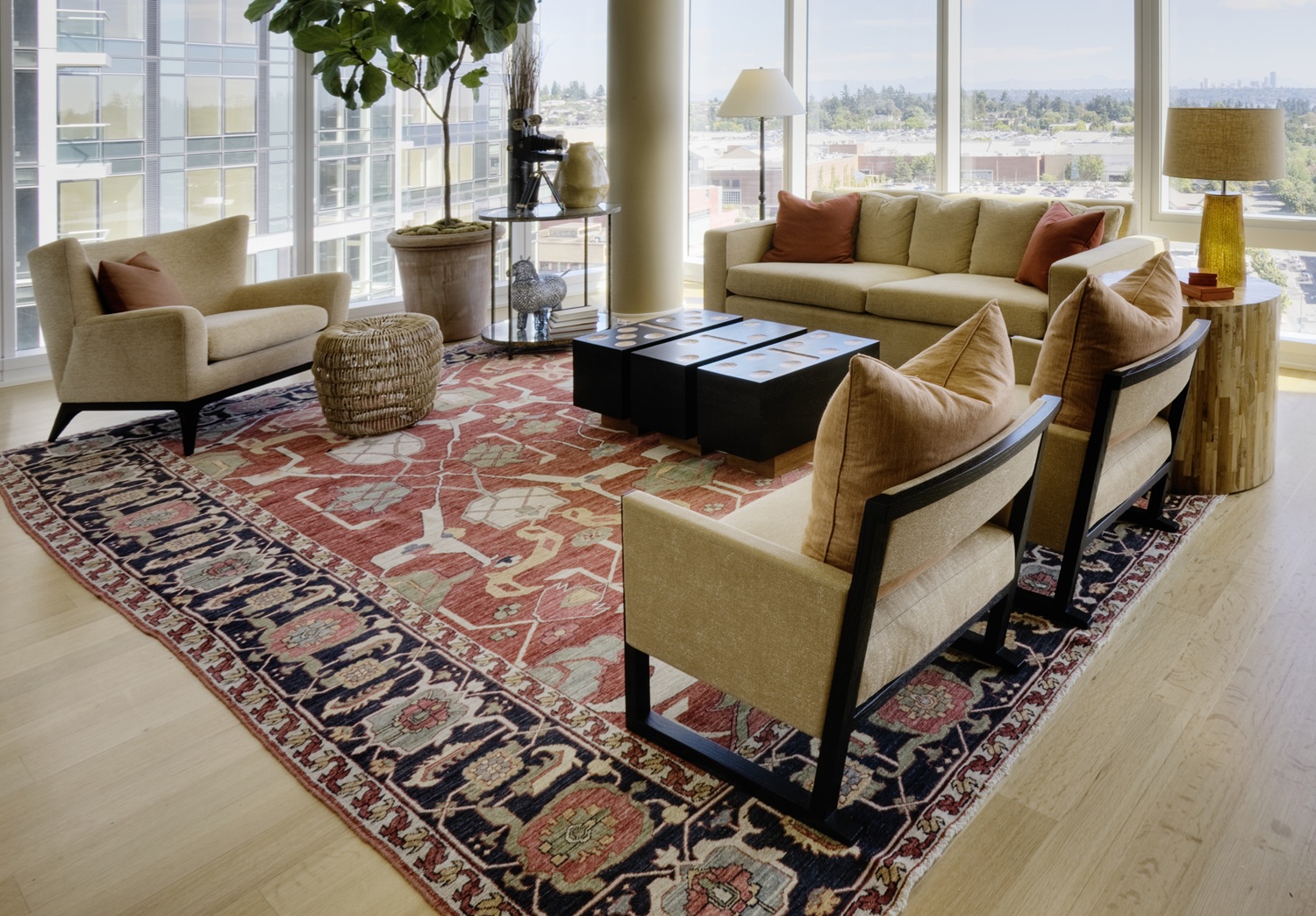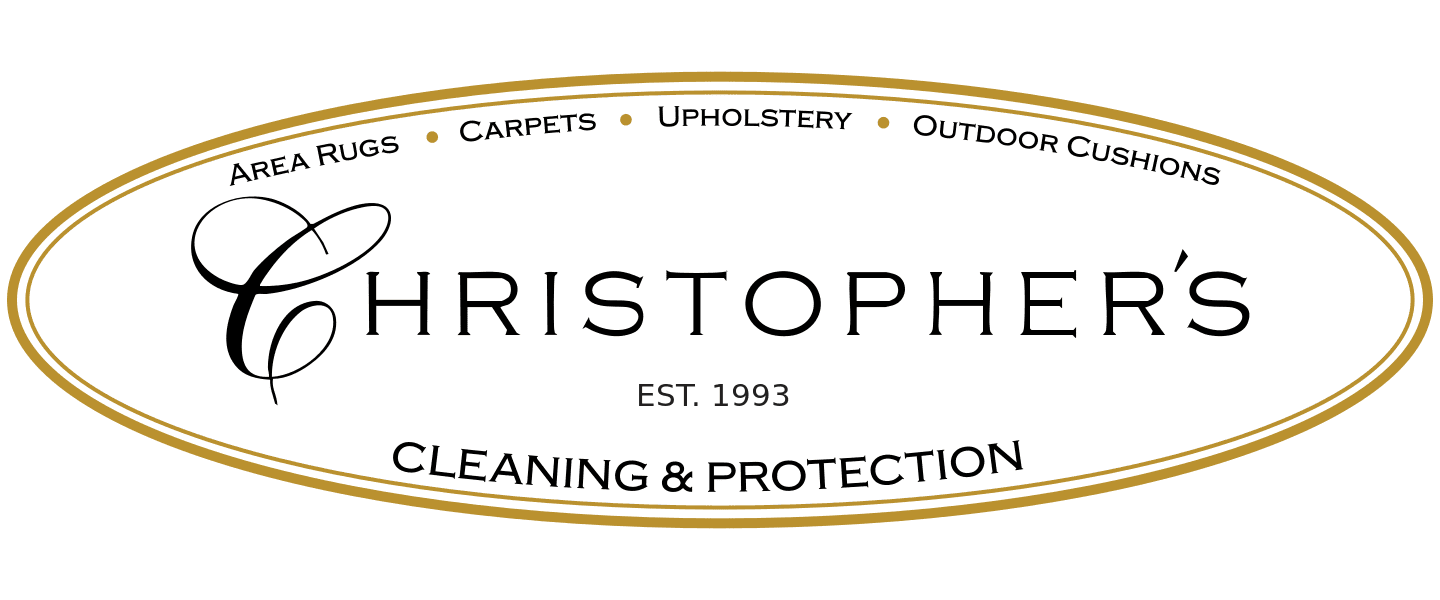Your Rugs May Be Clean – But Are They Truly Sanitized? Here’s the Difference
Area rugs provide the perfect backdrop for all these wonderful family moments: when a baby starts crawling, when a dog discovers his favorite nap spot, when the family gathers for movie nights and lazy Sundays on the couch. But with every step, spill, and snuggle, those cozy fibers are slowly collecting more than memories. Germs, allergens, bacteria, and even mold spores can settle deep within, well beyond the reach of your weekly vacuum.
So if you own one of those colorful and plush rugs, it’s important to understand that "clean" and "sanitized" are not the same thing. One focuses on appearance, the other protects your family’s health.
Again, clean to the eye doesn't always mean clean to the touch. Keep reading to learn what sets a sanitized rug apart and how to make sure yours measures up.
1 | Visual Appearance
Just because a rug looks clean doesn’t mean it’s free of contaminants. Most people stop at appearance, vacuuming up visible dust or wiping up a spill, and assume that’s good enough. But looks can be deceiving. What lies beneath the surface often tells a very different story.
Here’s what you need to know when judging a rug by appearance alone:
- Surface debris can mask deeper contamination. A rug may appear spotless on the surface but still harbor layers of dirt, pollen, dander, or bacteria beneath.
- Pet fur, crumbs, and soil often settle into the base of the fibers. Even high-pile rugs can look deceptively clean while harboring allergens or odors.
- Light-colored rugs show stains faster, but dark ones can conceal buildup. That means “clean-looking” isn’t always reliable, especially with dark oriental rugs or patterned wool rugs.
- Clean doesn’t mean sanitized. Surface-level cleaning (like vacuuming or basic brushing) does not eliminate microbes or control bacterial growth.
A clean rug may photograph well or impress guests, but it doesn’t guarantee it’s healthy or hygienic for your home.
2 | Surface vs. Deep Cleaning
The difference between surface and deep cleaning is simple: one handles what you see, the other targets what you don’t. Vacuuming, sweeping, or spot cleaning only removes dirt at or near the top of the rug. But to truly clean a rug and sanitize it, you need to reach down to where bacteria, moisture, and soil settle.
What Deep Cleaning Actually Does
- Deep cleaning reaches the lower layers of the rug’s fibers, where allergens, moisture, and grime settle over time.
- Professional rug cleaners use specialized equipment (like hot water extraction systems or steam machines) to break up soil and flush out contaminants.
- Surface cleaning typically removes 70–80% of dry soil, but only deep cleaning methods can remove embedded bacteria, mildew, and odor-causing agents.
- Area rugs, especially thicker ones, trap debris within the pile. You won’t get that out with a vacuum alone.
- Deep cleaning often includes a fiber-safe disinfecting step, which targets both visible dirt and invisible microbes.
3 | Odor Control
One of the clearest signs your rug isn’t sanitized is a lingering odor. Even after you vacuum or blot up a spill, smells can stick around. That’s because odor doesn’t live on the surface; it comes from bacteria, mold spores, or decaying organic matter embedded in the fibers.
To eliminate odor, you’ve got to address what’s causing it, not just cover it up. Here's how:
- Pet urine, spilled drinks, and moisture all sink deep into the rug padding or backing. Surface cleaning may remove the visible stain but leave behind bacteria that create persistent smells.
- Sanitizing targets the root cause of the odor, not just the symptom, by neutralizing bacteria, mildew, and microbial waste.
- Fragranced carpet sprays only mask the issue. Over time, the odor often returns worse than before.
- Hot water extraction is the most effective method for removing odor at the microbial level. Steam cleaning may be modestly effective but as there is no extraction involved steam cleaning won’t remove all bacteria and deep stains which can later oxidize and permanently discolor the area that wasn’t completely cleaned.
If your rug smells musty, sour, or like a wet dog, don’t just deodorize it. Sanitize it properly with spot cleaning coupled with injection extraction - something that Parkway’s sister division Christopher’s has specialized in and developed unique techniques for over 30 years .
4 | Health & Hygiene
Clean rugs may make your home look better, but sanitized rugs make your home healthier. If you have kids who crawl and play on your rugs, pets who nap on the carpet, or allergy sufferers in the house, sanitization isn’t optional. Allergens, bacteria, and dust mites can live undisturbed in rug fibers unless they’re properly treated.
How Sanitization Affects Your Home’s Health
- Unsanitized rugs can be a hotspot for mold spores, dust mites, and bacteria, which contribute to asthma, eczema, or sinus issues.
- High-traffic areas trap soil and allergens, which get released into the air every time someone walks by.
- Sanitizing destroys pathogens that basic cleaning misses, helping prevent respiratory irritation and cross-contamination, especially important after illness or exposure to pet waste.
- Environmentally friendly sanitizing options (like steam or plant-based solutions) are ideal for families looking to avoid harsh chemicals.
- A truly sanitized rug supports better air quality, especially in closed environments like basements, bedrooms, or rooms with limited ventilation.
5 | Cleaning Methods Used
Different rug cleaning methods achieve very different outcomes. Some are ideal for everyday maintenance. Others are designed for deeper sanitization. So knowing the method behind the service helps you make smarter decisions for your home and your rugs.
Here’s a comparison of the most common rug cleaning methods and what they actually do:
- Vacuuming (Surface Cleaning): Great for loose debris and dry dirt, but does nothing for bacteria, odor, or stains.
- Spot Cleaning: Helps with fresh spills or small stains but won’t sanitize or remove embedded dirt.
- Injection/Extraction: Uses specialized cleaners and detergents injected into the area rug and then extracted with a high pressure vacuum. This, coupled with spot cleaning (often required for pet stains and other food and liquid spots) is a very effective method for restoring your prized area rug investments.
- Dry Cleaning (Low-Moisture): Uses specialized compounds or solvents. This can be delivered via injection / extraction as well. This is another specialized technology that Parkway can offer that very few other rug and upholstery cleaners provide, as it requires dry cleaning knowledge and other specialized equipment for dry cleaning vs. wet cleaning. This would be required for certain types of stains that can not be completely removed using a wet cleaning injection/extraction method.
6 | Residue and Chemical Safety
When it comes to rug care, more cleaning isn't always better, especially if it leaves behind chemical residue. Many over-the-counter rug cleaners use harsh surfactants, deodorizers, or antimicrobial agents that aren’t safe for children or pets. A rug that’s “clean” but chemically loaded isn’t healthy.
What to Look for in Safe Sanitizing Solutions
- Choose environmentally friendly or “green certified” products. These use biodegradable and non-toxic ingredients that won’t affect indoor air quality.
- Avoid high-residue shampoos or deodorizers. These can attract more dirt over time and irritate sensitive skin.
- Ask your rug cleaner about rinse cycles. Proper rinsing ensures no chemical buildup remains in the fibers.
- For wool, silk, or oriental rugs, make sure the cleaner uses fiber-safe disinfectants, never bleach or ammonia-based solutions.
- If you’re concerned, request a material safety data sheet (MSDS) from your rug cleaning service. Any reputable provider will share it with you.
A clean rug should be safe to walk on barefoot, sit on, or let your baby crawl across, without worry. At Parkway rug cleaning division Christopher’s we typically remove area rugs to spot clean and then fully clean offsite. This will provide the safest and most effective cleaning result.
7 | Longevity of Cleanliness
Here’s the thing: when you only clean the surface, your rug gets dirty again much faster. Dirt, bacteria, and moisture left behind can act like a magnet for more buildup. On the other hand, sanitizing your rug not only deep cleans it, but it also extends how long your rug stays fresh.
How Sanitizing and Fabric Protection Protects Your Rug (and Your Investment)
- Sanitizing removes the microbial buildup that causes re-soiling. Without bacteria and residue, your rug stays cleaner longer.
- Deep sanitizing helps preserve rug fibers, especially in wool and natural textiles, by removing the contaminants that wear them down.
- It prevents odor recurrence. Sanitizing targets the source, so smells don’t come back after a few days.
- Less frequent cleanings are needed overall. A sanitized rug resists buildup and bacteria, so you can stretch the time between services.
- Helps preserve color vibrancy. Clean fibers reflect light better, while soiled ones look dull and aged.
- Christopher’s offers a special Fabric Protection program where a special repellent is applied after a deep cleaning. This fabric protection will not completely eliminate stains from setting in, but provides a barrier so that you can blot out a new stain to remove most of the dyes and damaging chemicals when an accident occurs. It is then best to call a professional like Parkway’s rug cleaning specialist Christopher’s to further spot clean and possibly deep clean the impacted area to prolong the useful life and appearance of your area rug.
Go Beyond Surface Clean. Spot Clean and Deep Clean Your Area Rugs with Christopher’s!

Spills, foot traffic, and time can take a toll, but Christopher’s offers professional area rug cleaning services and restoration tailored to your rug and its specific condition. Whether it’s fine orientals, delicate weaves, or modern rugs including the very delicate silks and viscose rugs that can be damaged without an experienced professional treatment, our team conducts a thorough inspection before every service and we will provide a recommendation to ensure the safest, most effective treatment.
With award-winning customer service and free rug pickup and delivery throughout Washington, D.C., Northern Virginia, and Maryland, caring for your rugs now becomes even more convenient. We will even move furniture, roll up your rugs and when it’s time to deliver, lay down your rugs under the furniture again - all part of our white glove treatment!
More information or to arrange a pickup can be found directly on Christopher’s website or call us at 240-255-7952.
